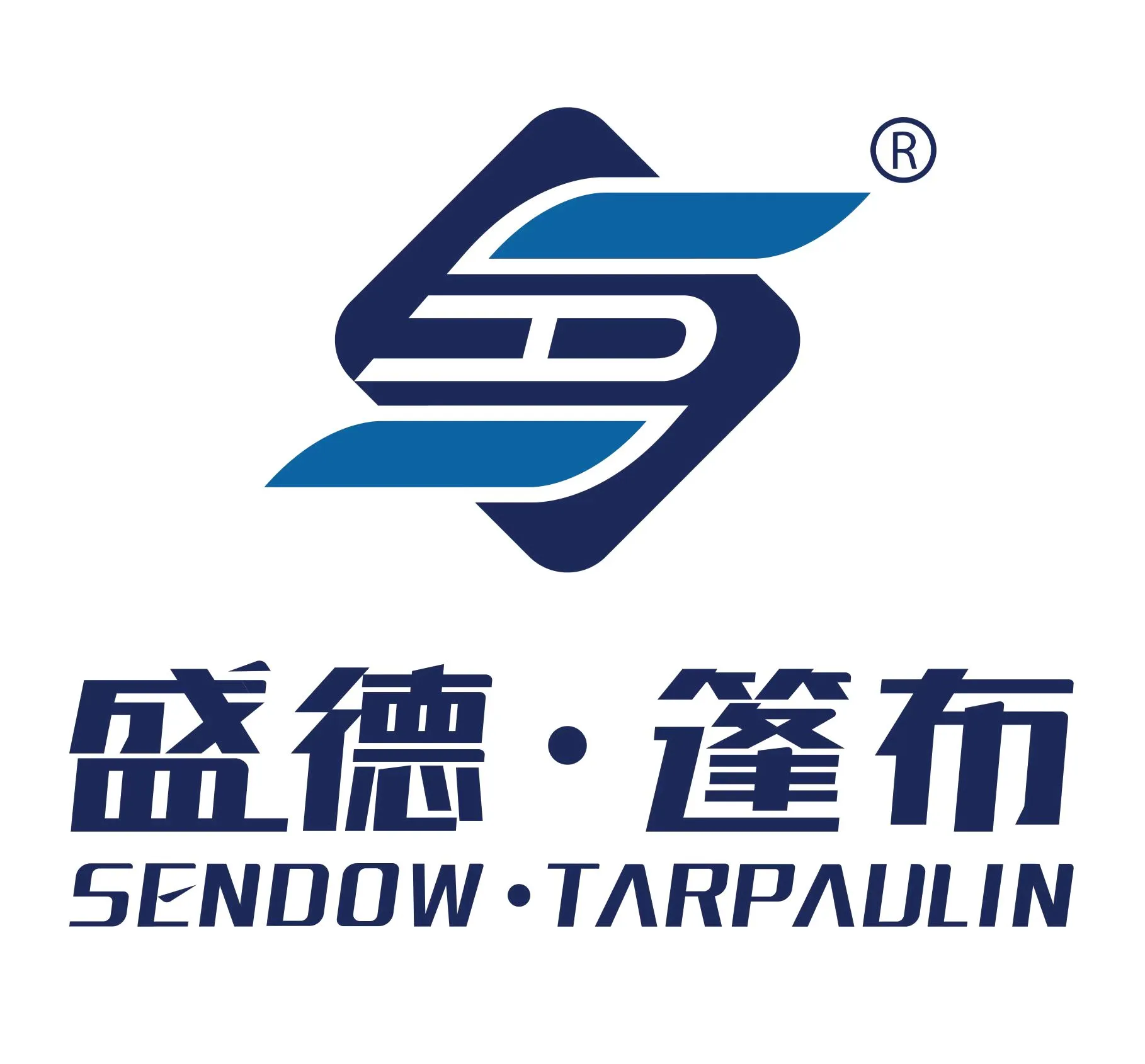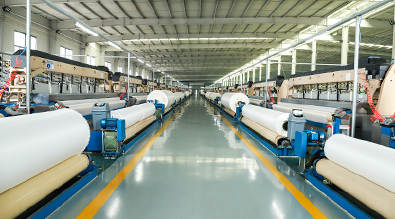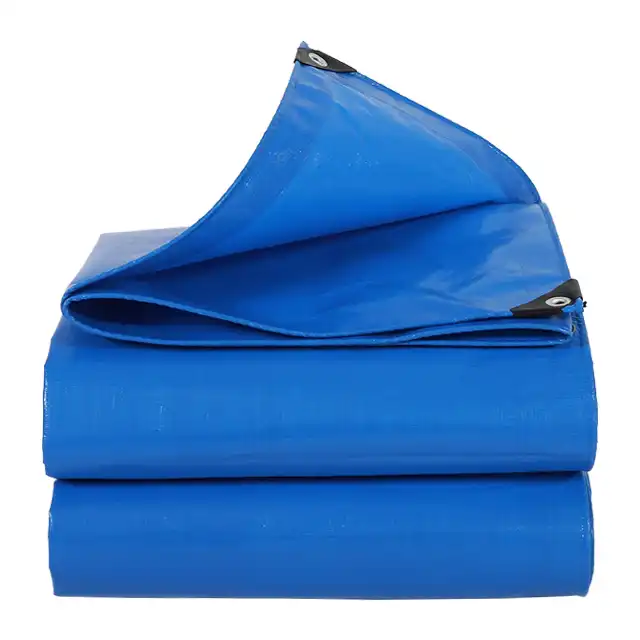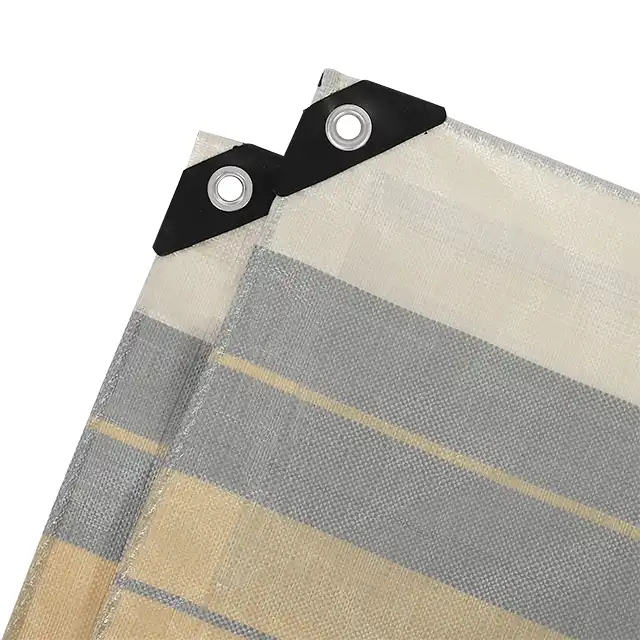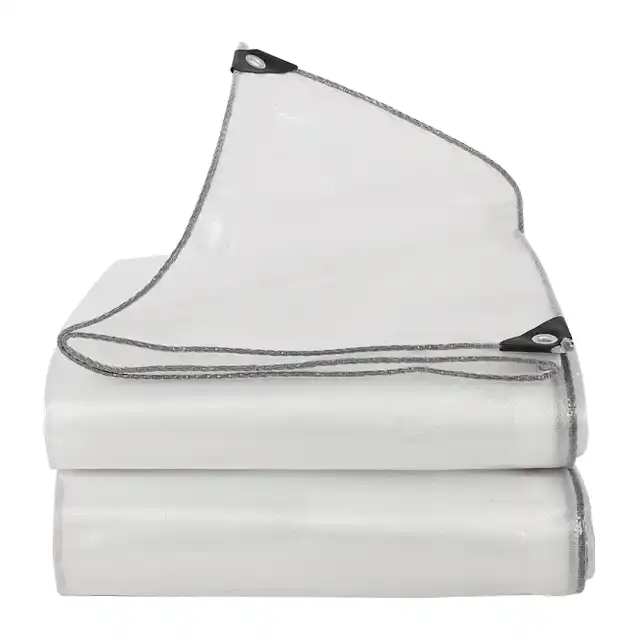How Do Sun Protection Tarps Provide Effective UV Defense?
In an era where UV radiation levels continue to rise globally, effective sun protection has become increasingly vital for both human health and material preservation. Sun protection tarps have emerged as a versatile and efficient solution for defending against harmful ultraviolet rays. These specialized tarps are engineered with advanced materials and specific manufacturing techniques that enable them to block, absorb, or reflect UV radiation, thereby providing a reliable barrier against sun damage. Unlike standard coverings, sun protection tarps incorporate UV inhibitors and stabilizers within their structure that significantly reduce UV penetration, creating safer, cooler environments beneath them while extending the lifespan of both the tarp itself and whatever it protects.
The Science Behind UV-Resistant Tarpaulins
Advanced Material Composition for Maximum Protection
 The exceptional UV defense capabilities of sun protection tarps stem primarily from their sophisticated material composition. SENDOW TARPAULIN's sun protection tarps utilize high-density polyethylene (HDPE) woven fabric with low-density polyethylene (LDPE) coating on both sides, creating a multi-layered barrier against ultraviolet radiation. This specialized construction begins with high-strength yarn that has been specifically engineered to provide extra UV protection against harmful sunrays and fading. The manufacturing process involves tightly weaving these reinforced fibers into durable fabric, which is then laminated to enhance both waterproofing and UV resistance. The density of the weave pattern—typically ranging from 10×10 to 14×14 mesh count—creates minimal space for UV radiation to penetrate. Additionally, the incorporation of UV stabilizers and absorbers throughout the material matrix helps to neutralize ultraviolet energy before it can cause photodegradation. These chemical additives work by either absorbing UV radiation and converting it to heat or by intercepting free radicals created during photochemical reactions, effectively extending the tarp's lifespan while maximizing its protective capabilities for whatever lies beneath it.
The exceptional UV defense capabilities of sun protection tarps stem primarily from their sophisticated material composition. SENDOW TARPAULIN's sun protection tarps utilize high-density polyethylene (HDPE) woven fabric with low-density polyethylene (LDPE) coating on both sides, creating a multi-layered barrier against ultraviolet radiation. This specialized construction begins with high-strength yarn that has been specifically engineered to provide extra UV protection against harmful sunrays and fading. The manufacturing process involves tightly weaving these reinforced fibers into durable fabric, which is then laminated to enhance both waterproofing and UV resistance. The density of the weave pattern—typically ranging from 10×10 to 14×14 mesh count—creates minimal space for UV radiation to penetrate. Additionally, the incorporation of UV stabilizers and absorbers throughout the material matrix helps to neutralize ultraviolet energy before it can cause photodegradation. These chemical additives work by either absorbing UV radiation and converting it to heat or by intercepting free radicals created during photochemical reactions, effectively extending the tarp's lifespan while maximizing its protective capabilities for whatever lies beneath it.
UV Treatment Processes and Their Effectiveness
SENDOW's sun protection tarps undergo rigorous UV treatment processes that significantly enhance their ability to defend against harmful radiation. The company employs specialized UV inhibitors with concentrations ranging from 1% to 7%, depending on the intended application and required level of protection. These UV treatments are integrated at the molecular level during the manufacturing process rather than simply applied as a coating, ensuring the UV protection won't wash off or degrade quickly over time. The effectiveness of these treatments is measured through extensive testing under accelerated weathering conditions, where the tarps are exposed to concentrated UV radiation to simulate years of sun exposure in a compressed timeframe. SENDOW's topgrade tarps consistently demonstrate superior performance in these tests, maintaining their structural integrity and protective capabilities even after extended exposure. The UV treatment process also addresses the challenge of wavelength-specific protection, as different UV wavelengths (UVA, UVB, and UVC) require different protective mechanisms. The comprehensive approach employed in SENDOW sun protection tarps ensures broad-spectrum coverage across the ultraviolet range, with particular emphasis on the most damaging UVB rays that cause material degradation and potential health hazards.
Color Technology and UV Reflection Properties
The color technology integrated into sun protection tarps plays a crucial role in their UV defense capabilities. SENDOW TARPAULIN offers sun protection tarps in various colors, each engineered with specific UV reflection properties. White and silver tarps provide the highest level of UV reflection, redirecting up to 90% of solar radiation away from the covered area. This reflection capability significantly reduces heat buildup underneath the tarp, making these colors ideal for applications where temperature control is essential alongside UV protection. Conversely, darker colored tarps like green, blue, and brown offer superior UV absorption properties, which can be advantageous in situations where minimizing glare takes precedence. SENDOW's manufacturing process incorporates UV-stable pigments that maintain their color integrity despite constant sun exposure, preventing color fading that would otherwise compromise the tarp's protective capabilities. The company's advanced color technology also ensures uniform UV protection throughout the entire tarp surface, eliminating weak spots that could allow radiation penetration. Additionally, some specialized sun protection tarps feature a dual-color design with different colors on each side, allowing users to strategically position the tarp based on seasonal needs—reflective side out during hot seasons and absorptive side out during cooler periods. This innovative approach to color technology transforms the tarp from a simple covering into a dynamic environmental management tool with enhanced UV defense capabilities.
Structural Design Elements That Enhance UV Protection
Reinforcement Techniques for Durability Under Sun Exposure
SENDOW TARPAULIN has pioneered several reinforcement techniques that significantly enhance the durability of sun protection tarps under prolonged sun exposure. The company's middle-duty PE tarpaulins feature a thickness range of 7-12 mil, providing substantial physical defense against UV degradation while maintaining flexibility for various applications. Strategic reinforcement is incorporated at high-stress points, including corners, edges, and grommets, where exposure and tension combine to create vulnerability. These reinforcements utilize double-layered construction with additional UV inhibitors concentrated in these areas to prevent premature failure. The company's manufacturing process involves heat-sealing techniques that create molecularly bonded seams rather than stitched connections, eliminating needle holes that could allow UV penetration and subsequent water infiltration. Additionally, SENDOW employs a cross-lamination process where multiple layers of UV-resistant material are oriented in different directions, distributing stress and preventing the propagation of UV-induced damage. This sophisticated structural approach ensures that sun protection tarps maintain their protective capabilities even under challenging environmental conditions. The company's commitment to durability is further demonstrated by their arctic flexibility feature, which prevents cracking and degradation that typically occurs when conventional materials are exposed to temperature fluctuations alongside UV radiation. These comprehensive reinforcement techniques work in concert to create sun protection tarps that not only block UV radiation effectively but maintain this capability throughout their extended service life.
Weave Patterns and Their Impact on UV Blockage
The specific weave patterns employed in SENDOW's sun protection tarps significantly influence their UV blockage capabilities. The company utilizes advanced water-jet looms, including specialized 4.25m width equipment, to create precisely engineered weave structures that optimize UV defense. Their technical specifications reveal mesh counts ranging from 10×10 to 14×14, creating a dense barrier that physically blocks UV radiation from penetrating through the tarp. Higher mesh counts produce tighter weaves that provide superior UV blockage, particularly important for applications requiring maximum protection. SENDOW's manufacturing expertise allows them to customize the weave density according to specific protection requirements while maintaining appropriate air permeability to prevent wind damage. The company's unique 5m and 4m width fabric weaving machines enable the production of extra-wide tarps without joints, eliminating potential weak points where UV radiation might penetrate. This seamless construction maintains consistent protection across the entire surface area. Furthermore, SENDOW employs specialized weaving techniques that create a tortuous path for light penetration, effectively trapping and dispersing UV radiation before it can pass through. The combination of precise weave patterns, advanced manufacturing equipment, and quality control procedures ensures that SENDOW sun protection tarps provide reliable, comprehensive UV defense across their entire structure, with no weak points or inconsistencies that would compromise their protective capabilities.
Edge Finishing and Grommet Technology for Complete Coverage
The effectiveness of sun protection tarps in providing comprehensive UV defense significantly depends on their edge finishing and grommet technology. SENDOW TARPAULIN has developed sophisticated edge finishing techniques that prevent UV degradation at these vulnerable points. Their sun protection tarps feature heat-sealed edges with reinforced hems that create a continuous barrier against UV penetration. This advanced finishing prevents the common issue of edge fraying and deterioration that typically occurs first in conventional tarps exposed to sunlight. The heat-sealing process not only strengthens the perimeter but also encapsulates the edge fibers with additional UV inhibitors, extending the functional lifespan of the entire tarp. Complementing this edge technology, SENDOW's grommet system employs rust-resistant metal reinforced with UV-stabilized plastic collars that maintain structural integrity despite constant sun exposure. These grommets are strategically positioned at optimal intervals—typically every 18 to 24 inches—to ensure even tension distribution while providing numerous attachment points for complete, gap-free coverage. The company's attention to detail extends to the installation of reinforcement patches around each grommet, creating a zone of enhanced durability where tension and UV exposure combine most intensely. These technical refinements address the critical vulnerabilities where traditional tarps typically fail first. By strengthening these potential weak points, SENDOW's sun protection tarps maintain their protective integrity throughout their service life, providing consistent, reliable UV defense across the entire covered area without developing gaps or compromised zones that would allow damaging radiation to penetrate.
Practical Applications and Performance Factors
Outdoor Living Spaces and Recreational UV Protection
Sun protection tarps have revolutionized how we safeguard outdoor living spaces and recreational areas from harmful UV radiation. SENDOW TARPAULIN's sun protection tarps offer exceptional versatility for these applications, creating comfortable, safe environments for various outdoor activities. When deployed as sun shade covers for patios, decks, and garden seating areas, these tarps provide crucial UV defense while allowing people to enjoy outdoor spaces even during peak sunshine hours. The UV treatment incorporated into SENDOW's products—ranging from 1% to 7% concentration—significantly reduces exposure to harmful radiation that causes sunburn, premature aging, and increases skin cancer risk. For recreational applications such as picnic pads and leisure tents, the lightweight yet durable construction (65gsm to 280gsm) enables easy handling and transportation without sacrificing protective capabilities. Car canopies created with these sun protection tarps not only shield vehicles from UV damage that causes paint fading and interior deterioration but also maintain significantly cooler temperatures underneath by blocking solar radiation. The 100% waterproof feature adds practical versatility to these applications, ensuring protection against unexpected rain showers without needing to change coverings. Families with children particularly benefit from creating UV-protected play areas using these tarps, allowing outdoor play time without constant concern about sun exposure. The anti-freezing and arctic flexibility properties extend the usability of these sun protection tarps into cooler seasons, providing year-round utility. By incorporating SENDOW's sun protection tarps into outdoor living spaces and recreational settings, users effectively create microclimates with dramatically reduced UV exposure while maintaining comfortable temperatures and protection from the elements.
Construction and Industrial Applications for Sun Defense
In construction and industrial environments, sun protection tarps serve critical functions beyond mere covering, particularly in UV defense scenarios. SENDOW TARPAULIN's high-performance sun protection tarps are extensively utilized throughout the construction industry as protective barriers for building materials, equipment, and work zones. Construction materials like lumber, drywall, and cement products are highly susceptible to UV degradation, which can compromise their structural integrity and appearance. SENDOW's sun protection tarps, with weights ranging from 100gsm to 180gsm for middle-duty applications, provide robust defense against these damaging effects. The maximum width capability of 5.1 meters allows for comprehensive coverage of large-scale construction materials without seams or gaps where UV might penetrate. In industrial settings, these tarps protect valuable machinery and equipment from UV-induced deterioration of rubber components, plastic housings, and hydraulic systems, significantly extending operational lifespans and reducing maintenance costs. The tarps' tear-resistant properties ensure they withstand the rigorous conditions of construction sites while maintaining their protective capabilities. Additionally, SENDOW's sun protection tarps create safer working environments by establishing UV-shielded zones where workers can perform tasks with reduced exposure to harmful radiation, addressing a significant occupational health concern in outdoor industries. The anti-corrosion feature provides an additional benefit for metal components and structures that face combined challenges from UV radiation and moisture. With customization options available for specific project requirements, SENDOW TARPAULIN offers sun protection tarps that can be precisely tailored to the unique demands of various construction and industrial applications, delivering reliable UV defense while enhancing overall project efficiency and material preservation.
Agricultural and Marine Uses for UV Radiation Management
SENDOW TARPAULIN's sun protection tarps have become indispensable tools for UV radiation management in agricultural and marine sectors, where sun exposure presents unique challenges. In agricultural applications, these specialized tarps serve as greenhouse fabrics that selectively filter harmful UV radiation while allowing beneficial light wavelengths to reach crops. This targeted protection prevents leaf burn, reduces water loss through evaporation, and creates optimal growing conditions that enhance yield and quality. Orchard owners utilize SENDOW's sun protection tarps as rain covers that simultaneously provide UV defense for sensitive fruit crops, preventing sunscald that can render produce unmarketable. The lightweight construction (ranging from 65gsm to 280gsm) ensures these protective systems don't damage supporting structures while still delivering robust UV protection. In aquaculture environments, SENDOW's impermeable tarps for aquaculture create essential UV barriers that prevent excessive algae growth caused by unfiltered sunlight while maintaining appropriate water temperatures for optimal fish health and development. The UV-resistant properties of these tarps (with 1%-7% UV treatment concentrations) ensure they maintain their protective capabilities despite constant exposure to both water and intense sunlight—conditions that rapidly degrade conventional coverings. Marine applications extend to boat covers and dock shades, where sun protection tarps defend against the combined degradation factors of UV radiation and salt water. The company's advanced UV-resistant materials demonstrate exceptional durability in these challenging environments, maintaining flexibility and protective properties without developing the cracks and weak points that plague standard marine coverings. By incorporating SENDOW's sun protection tarps into agricultural and aquacultural operations, producers effectively manage UV exposure, creating controlled environments that optimize production while protecting valuable crops and aquatic stock from harmful radiation effects.
Conclusion
Sun protection tarps provide effective UV defense through advanced material science, specialized manufacturing processes, and thoughtful design elements. SENDOW TARPAULIN's products exemplify how high-density polyethylene fabrics with UV inhibitors can create reliable barriers against harmful radiation while maintaining durability and versatility. Whether for outdoor living, industrial applications, or agricultural use, these engineered solutions deliver essential protection from increasingly intense solar radiation.
With 20 years of excellence in tarpaulin manufacturing, Linyi Shengde Plastic Co., Ltd. stands ready to meet your sun protection needs with customized solutions backed by ISO 9001:2015 certification and rigorous quality control. Our R&D team continuously advances product performance to serve diverse applications worldwide. Ready to enhance your UV protection strategy? Contact us today at info@shengdetarp.com to discuss how our expertise can work for you.
References
1. Zhang, L., & Wang, H. (2023). Advances in UV-Resistant Polymer Technologies for Outdoor Applications. Journal of Polymer Science, 45(3), 219-234.
2. Johnson, M. R., & Smith, P. T. (2022). Comparative Analysis of UV Protection Methods in Agricultural Settings. Agricultural Engineering International, 18(2), 87-103.
3. Rodriguez, A., & Thompson, R. (2024). Ultraviolet Radiation Protection in Construction Materials: A Comprehensive Review. Construction and Building Materials, 388, 129-147.
4. Chen, X., Liu, Y., & Garcia, J. (2023). The Effectiveness of Polyethylene-Based Materials in UV Radiation Blockage. Materials Science and Engineering, 92(1), 56-72.
5. Williams, D., & Brown, S. (2022). UV Stabilization Techniques in High-Performance Outdoor Fabrics. Textile Research Journal, 51(4), 312-328.
6. Patel, N., & Koizumi, T. (2024). Longevity Assessment of UV-Treated Polyethylene Tarps in Extreme Weather Conditions. Journal of Applied Polymer Science, 142(8), 52641-52659.
